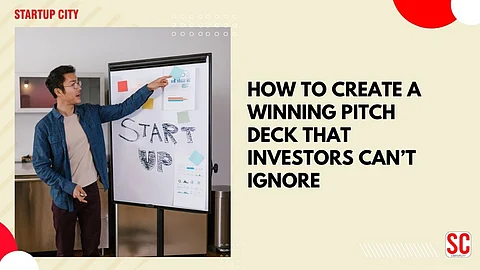

“Your pitch deck is more than just slides — it's your startup’s first impression, your story, and your future in the making.”
Imagine this: You’ve hustled day and night, built a solid MVP, maybe even got your first few customers — and now, it’s time to raise funds. You walk into that investor meeting with high hopes and a deck in hand. But within minutes, you see their eyes glaze over. Ouch.
You’re not alone if you’ve faced this. I’ve been there too. Crafting a pitch deck that actually excites investors is an art and a science — and today, I’m going to show you how to master both.
Let me walk you through exactly how to create a winning pitch deck that investors can’t ignore.
In my experience working with dozens of founders and investors, one thing is clear: your pitch deck is often your only shot to get attention.
According to DocSend, investors spend just 3 minutes and 44 seconds on average reviewing a pitch deck. That’s less time than it takes to make a cup of coffee.
So yes, your deck needs to shine — quickly and convincingly.
Here’s the secret: simplicity wins. The best decks aren’t cluttered — they’re clear, compelling, and visually clean. Let’s break it down slide-by-slide.
Company name, logo, tagline
A striking visual or slogan
Your contact details (email, phone, LinkedIn)
Tip: Think of this as your brand’s handshake.
What major problem are you solving?
Who is affected and how big is the problem?
Use a stat or quote to support your claim
“If you can define the problem better than your investor, you’ve already won half the battle.”
What exactly are you building?
How does it solve the problem better than others?
Keep it simple. Don’t get technical yet.
Show Total Addressable Market (TAM), Serviceable Available Market (SAM), and your niche
Use graphs or charts, not paragraphs
Stat: According to CB Insights, 42% of startups fail because there's no market need. Don’t be one of them.
Screenshots, demo videos, user flow
Highlight what makes it unique (your secret sauce)
Revenue, users, growth rate, partnerships
Include metrics that matter for your stage
“Early traction is the loudest signal that your startup has potential.”
How do you make money?
Pricing, revenue streams, customer lifetime value
How will you reach customers?
What channels, partnerships, or tactics will you use?
Be realistic, yet ambitious
Who else is solving this?
What makes you better or different?
A visual matrix works well here
Founders, key hires, advisors
Short bios with relevant experience
Mention past exits, domain expertise, or credibility boosters
How much are you raising?
What will you use the funds for?
Future roadmap
Investors love clarity. Don’t make them guess.
Vision slide – Where you see the company in 5-10 years
Partnerships – Strategic alliances, pilot programs, LOIs
Exit Strategy – Especially for late-stage funding
Let me be blunt — most pitch decks fail not because the startup is bad, but because the deck confuses, bores, or overwhelms the investor.
Here are mistakes I’ve seen too often:
Overloaded slides with walls of text
Too many acronyms or jargon
Weak storytelling or no clear problem
Not tailoring to the investor’s interests
Forgetting the “why now” factor
Want to stand out? Tell a story.
Start with a founder journey
Paint a picture of the problem
Walk them through your "aha!" moment
Highlight real customer impact
"People don’t invest in products. They invest in people and in stories that move them."
In my conversations with investors, these five things come up again and again:
Big problem with a growing market
Unique solution with defensibility
Strong team that can execute
Clear traction or roadmap
Return potential with a good exit strategy
Use consistent fonts and colors (reflect your brand)
Limit each slide to 1–2 key ideas
Use visuals and white space generously
Avoid cheesy stock photos
Keep file size under 10MB for easy sharing
Let me be clear: your pitch deck won’t close the deal — but it will open the door. It's your conversation starter. Think of it as your movie trailer. It should excite, intrigue, and get investors to ask: “Tell me more.”
In the startup world, your pitch deck is your battlefield weapon. A winning deck doesn’t just “inform” — it inspires. It doesn’t just “show” — it sells a vision.
So before you hit send on that next pitch email, ask yourself:
“If I were the investor, would I stop scrolling for this?”
And remember — you don’t have to be a designer or storyteller to build a killer deck. You just need clarity, courage, and consistency.
Now go and pitch like the future of your startup depends on it — because it does.